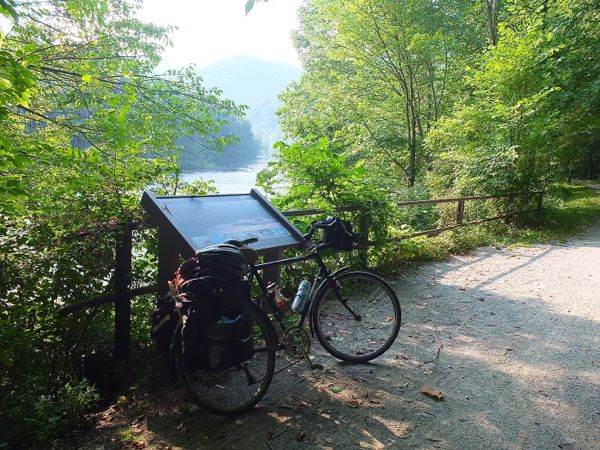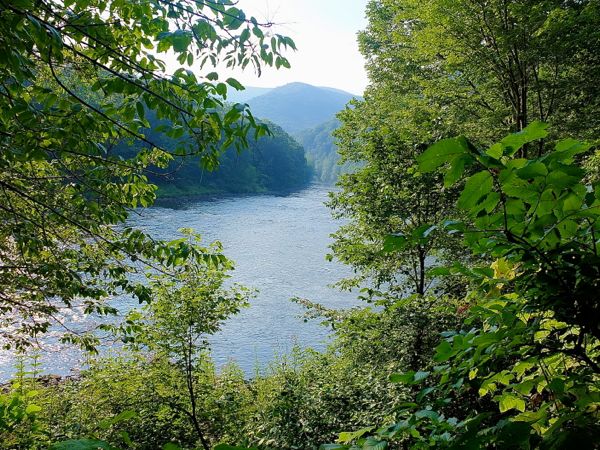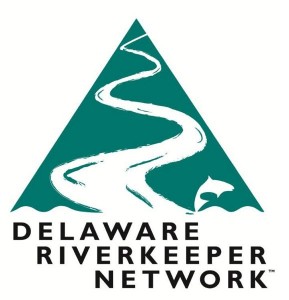DEP Employs Sham Science On Barnegat Bay
DEP to Delist Bay “impairments”, Despite Rutgers Study
[Update – 7/27/12 – Having been caught with their pants down, and knowing that EPA would never approve this scientifically bogus and illegal delisting, DEP now says the proposal will be withdrawn. Tom Johnson at NJ Spotlight reports another huge embarrassment by Businessman Bob and his DEP gang that can’t shoot straight:
“In all likelihood, this proposal will be withdrawn,’’ Hajna said. [end update]
[technical Update below – for wonks only!]
“BB-LEH Estuary is an impaired system both in respect to aquatic life support and human use as is evident in the conclusions of this study” ~~~ Rutgers Professor Michael Kennish “Assessment of Nutrient Loading and Eutrophication in Barnegat Bay-Little Egg Harbor, New Jersey in Support of Nutrient Management Planning”
We have been writing for some time about flaws in DEP’s response to Barnegat Bay, particularly with respect to failure to develop a “Total Maximum Daily Load” (TMDL) as required by the federal Clean Water Act.
We have focused on major flaws in DEP surface water quality standards, water quality monitoring, and assessment methods to determine “impairment”.
Eutrophic condition indicators – are all bad – while DO shows low eutrophication [i.e healthy water quality]:
“[Rutgers professor] Mike Kennish is the leading expert on Barnegat Bay – see his July 14 powerpoint DEP presentation on ecological conditions of the Bay [ read the complete paper here which finds: [quoting Kennish]
Eutrophication poses the most serious threat to the long term health of the Barnegat Bay-Little Egg Harbor Estuary (Kennish et al., 2007a). Nutrient enrichment and associated organic carbon loading in this shallow, coastal lagoon have been linked to an array of cascading environmental problems such as increased micro- and macroalgal growth, harmful algal blooms (HABs), altered benthic invertebrate communities, impacted harvestable fisheries, and loss of essential habitat (e.g., seagrass and shellfish beds). The net insidious effect of progressive eutrophication is the potential for the permanent alteration of biotic communities and greater ecosystem level impacts.
Basically, DEP regulations, methods, and programs fail to measure actual conditions and respond to the fact that all the science and ecological indicators prove that the Bay is on the verge of ecological collapse.
Those DEP technical and policy problems are made far worse by Governor Christie’ regulatory animus, including his veto of legislation that would have required that a TMDL be developed for the Bay.
Going beyond even those historical failures, in an outrageous move, DEP now has proposed to delist Barnegat Bay (scroll towards end of document) as an impaired water body in the 2012 “impaired waters list“ submitted to US EPA for review and approval, as required by the Clean Water Act.
The DEP proposal reverses prior “impairment” findings and contradicts years of science that shows the Bay is “impaired” and on the verge of ecological collapse.
“BB-LEH Estuary is an impaired system both in respect to aquatic life support and human use as is evident in the conclusions of this study”.
The DEP proposed delisting was blasted in comments submitted to EPA by scientists at the Barnegat Bay Partnership:
We are concerned that the Department is using the Barnegat Bay 2011 Monitoring data to remove impairments from the Integrated List at this stage but appears to be putting off using that same data to add any potential impairments until the new bay-specific methodology is established. Any delistings based on the 2011 data should occur after the new methodology is developed and more information is available to examine if conditions have indeed changed.
The timing of dissolved oxygen (D.O.) sample collection is also a concern. Minimum D.O. levels tend to occur in the early morning hours. Grab samples collected in the late morning to mid-day do not represent minimum D.O. conditions.
DEP has known about these flaws – which present a false favorable assessment of water quality and ecological health – for over 15 years, yet has done nothing to correct them.
We will be calling on EPA to reject the DEP proposal.
For details, see below from our friends at PEER:
BOGUS BARNEGAT BAY CLEAN BILL OF HEALTH IS DEATH SENTENCE
Removing It from Impaired Waters List Precludes Remedial Action for Years
Trenton — In a regulatory sleight of hand, the Christie Department of Environmental Protection (DEP) has proposed to remove the ailing Barnegat Bay from the official list of water bodies slated for remedial action in the next two years. The New Jersey Department of Environmental Protection (DEP) proposal to remove Barnegat Bay from the 2012 list of impaired waters flies in the face of a recent Rutgers University study that found the Bay on the verge of ecological collapse. If approved by the U.S. Environmental Protection Agency (EPA), the effect will be disastrous for Barnegat Bay’s future viability, according to Public Employees for Environmental Responsibility (PEER).
Every two years states submit to the U.S. Environmental Protection Agency for review and approval a list of streams, lakes, bays and other water bodies that do not meet the minimum standards of the federal Clean Water Act. That “impaired” listing triggers a legal requirement that the state must develop and execute a recovery plan, called a Total Maximum Daily Load (TMDL), which essentially puts the water-body on a pollution reducing diet until it returns to ecological health.
Earlier this month, New Jersey submitted its 2012 list to EPA but delisted major portions of Barnegat Bay with cryptic explanations, such as this:
“Applicable WQS [Water Quality Standard] attained; reason for recovery unspecified.”
The 2012 proposed deletion would reverse prior “impairment” designations by the DEP due to low levels of dissolved oxygen (DO) in the water. That finding was disputed in comments submitted to EPA by scientists at the Barnegat Bay Partnership (BBP), the lead management entity for the Bay. In addition to violating the DO standard, the Bay also suffers from severe eutrophication, over-abundant stinging jellyfish, hazardous algal blooms, and declining health of multiple biological indicators, including submerged aquatic vegetation.
Perhaps worst of all, the proposed delisting freezes any significant near-term action to heal the Bay, especially if DEP continues to employ regulatory evasions. For example, DEP would need to revise various surface water quality standards and assessment methods, both of which require public comment period and EPA approval, but no such plans are even on the horizon. Even if it Barnegat Bay were put back on the 2014 “impaired” list, a TMDL Report would be completed no sooner than 2016 which then must go through the rulemaking process as an amendment to the Water Quality Management Plan, a process taking a year or more. That would push clean-up implementation back to 2018 at the earliest.
“All of the ecological trends in Barnegat Bay are pointing downwards and this critical water body may soon reach a tipping point to becoming a dead zone,” stated New Jersey PEER Director Bill Wolfe, noting that Governor Chris Christie vetoed legislation last year requiring a TMDL for Barnegat Bay. “The DEP is defying the science and clearly violating the Clean Water Act by using regulatory powers in a political attempt to echo Governor Christie’s veto of a TMDL for the Bay. This amounts to a death sentence for Barnegat Bay.”
###
See the delisting of Barnegat Bay from 2012 impairment list
Look at new Rutgers study on declining health of Barnegat Bay
See the critical comments from the Barnegat Bay Partnership
View continuing threats to Barnegat Bay
New Jersey PEER is a state chapter of a national alliance of state and federal agency resource professionals working to ensure environmental ethics and government accountability
[Technical update – Just how long will it take DEP to develop water quality standards, monitoring data, assessment methods, and Guidance documents required to protect Barnegat Bay and produce real (enforceable and quantifiable) pollutant reductions?
DEP documents show that they had been working on this for more than 15 YEARS!
In 2003, I led a DEP team that did that for phosphorus nutrient problems in freshwater – that effort took less than 6 MONTHS! See this DEP Technical Manual:
A bit of history on BBay nutrient issues – By their own documents, DEP knew that dissolved oxygen was a very poor indicator way back in the mid 1990’!:
The DEP’s “2012 Integrated Water Quality Monitoring and Assessment Methods” document states:
The Department is currently developing indexes to assess biological health and other methods for identifying the causes and sources of water quality impairment within the watershed, with the goal of developing watershed-specific nutrient criteria. Additional information about this effort is available on the Department’s Web site at http://www.state.nj.us/dep/barnegatbay/plan- wqstandards.htm. Because of its priority status, the Barnegat Bay initiative is proceeding on a different timeline than the 2012 303(d) List, which must be submitted to USEPA by April 2012. The Department will still include the Barnegat Bay in its statewide assessment of water quality for 2012; however, that assessment will be based primarily on concentrations of dissolved oxygen, levels of pathogenic bacteria, and other relevant data, as described in the 2012 Methods Document. This assessment will also utilize the extensive water monitoring data collected in Barnegat Bay and the tributaries throughout 2011 as part of this priority initiative. New assessment methods developed for the Barnegat Bay will be proposed for public review and comment separately from the draft 2012 Methods Document and, once those new methods are finalized, they will be employed to assess the waters of the Barnegat Bay Watershed. The Department expects the water quality assessment of the Barnegat Bay to be completed by 2013.
But according to DEP’s 2009 “Nutrient Criteria Enhancement Plan”:
“New Jersey recognized in the mid-1990s that relying on chemical concentrations alone as indicators of nutrient impacts did not adequately identify or protect waters with nutrient-related problems.”
The below excerpt from the DEP’s 2009 Nutrient Criteria Enhancement Plan is a perfect illustration of those problems. Read it closely and see how DEP is misguidedly setting far too high a scientific burden of proof. DEP confuses causation with merely linking stressors to biological response:
3. Nutrient StudiesNew Jersey recognized in the mid-1990s that relying on chemical concentrations alone as indicators of nutrient impacts did not adequately identify or protect waters with nutrient-related problems. Nutrient-related problems (e.g., excessive algae or excessively low dissolved oxygen (DO)) were sometimes observed in waters with low concentrations of total phosphorus and sometimes not observed in waters with high concentrations of total phosphorus. …The Department is conducting technical studies linking stressors (i.e., total phosphorous, nitrogen) with biological responses (i.e., periphyton diatoms, biomass, chlorophyll a, diurnal DO, turbidity, etc.). Active field investigations and site-specific studies are currently underway to investigate the relationships between nutrients (stressors) and response indicators (e.g., chlorophyll a, algal biomass and algal community structure) to determine if predictive stressor response models can be developed that are protective of designated uses and can be used in future assessments. The following studies are being conducted to develop appropriate biological indicators and indices to correlate between chemical concentrations of nutrients and the biological responses. (@page 19) […]Shallow Coastal Bays (including Barnegat Bay):The federal government (USEPA and NOAA) has already developed a suite of indicators (e.g., EPA’s National Coastal Assessment Report 2005 and NOAA’s National Estuarine Eutrophication Assessment update) and applied them to New Jersey’s coastal bays. The Department is working with Rutgers, USEPA Region 2, USEPA Office of Research and Development, and NOAA to evaluate existing indicators and establish New Jersey-specific benthic indicators to assess aquatic life use in New Jersey’s shallow coastal bays by 2010. The Department has also begun collecting real-time diurnal DO data, in partnership with Monmouth University and the Barnegat Bay Estuary Program. These benthic indicators will also help identify aquatic life use impairments that are nutrient related. Existing data on benthic communities in the near shore ocean waters and estuaries of New Jersey has been compiled and additional data has been collected;however, additional research is needed to develop cause/response indicators to determine if nutrients are the cause of any use impairment found in these waters. The Department has applied for a USEPA grant to collect sediment cores from the tidal region of Barnegat Bay and determine the chronology of nutrient changes (N/P) and associated ecosystem level responses. Changes in various biogeochemical proxies (biogenic Si, stable isotopes of C and N, etc), along with changes in diatom community structure, will be used to infer changes in nutrient loading and land use throughout the watershed.These benthic indicators for coastal waters, once they are developed, will be used to reassess aquatic life uses in these waters. Where assessment results indicate use impairment based on these new indicators, the Department will need to determine if nutrients are the cause of impairment before proceeding with nutrient criteria development for these waters. (@page 18)
Fifteen years is far too long to fix these regulatory and policy problems.
As I noted above with respect to phosphorus eutrophication in freshwater, with leadership biological thresholds to support an enforceable standard can be put in place in less than 6 MONTHS!






